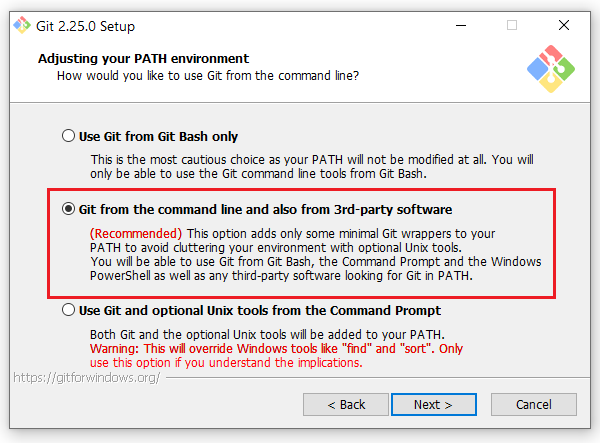

- #Git bash windows asking for password every time how to
- #Git bash windows asking for password every time install
- #Git bash windows asking for password every time update
Any kind of files in a folder and its subfolders.

“Git bash” is a pretty lousy name, but that’s what it is! How and WHERE to Run Git

I have no idea why they can’t just call it “Git cli” or “Git commands”. What is “git bash”? Turns out it’s just a command line interface. So we’ll be using Git only with Git Bash.Īlso when asked in another dialog, choose to make git bash show up in the context menu when you right click a windows folder. Even if I change their locations, I have to manually remove the old environment variables. Because if I uninstall programs, they still remain there. As a DOS user, you know that if you run a command from the C:\> prompt without adding it to your environment variables, you’ll get a message saying “‘git’ is not recognized as an internal or external command, operable program or batch file.” But I’ve never liked adding environment variables to my PATH locations. Then you’ll get the following screen where I’ve chosen the very first option: At one choice screen, select the context menu with Git Bash and Git GUI. Along the way, you’ll be asked to choose how you want to use git.
#Git bash windows asking for password every time install
Go to and install the git for Windows package. Let’s take it from the beginning and go from there.
#Git bash windows asking for password every time how to
In this article, i’ll explain how to get around all that and still use the command line on Windows.Īlso a lot of terms used in git guides assume you know stuff – like what the hell is a “git bash”? Then you’ll hear things like “Powershell”, “Msysgit” etc which can confuse you all over again. That’s not a drawback as such, but it means you have to mess around with environment variables, typing in the names of folders to get to where you want etc. To start off with, it’s mostly command line based. Windows.Coming from a pure Windows background (with experience using DOS), and trying to make sense of version control for the first time in my life, getting started with git wasn’t easy.
#Git bash windows asking for password every time update
Via web browser, users need to update to the latest version of Git for Use of a web browser to authenticate to GitHub. Users authenticate when using Git for Windows, and now requires the Using an older version of Git for Windows.

We have detected that you recently attempted to authenticate to GitHub Here is what exactly was the email by github team. I received an email telling me about this. If you are facing this issue in November 2020 then you need to update your git version. If you created your key with a different name, or if you are adding an existing key that has a different name, replace id_ed25519 in the command with the name of your private key file. If not started, start the ssh-agent in the background using $ eval "$(ssh-agent -s)"Īdd your SSH private key to the ssh-agent using $ ssh-add ~/.ssh/id_ed25519. Anyways, I will copy-paste the commands here.Ĭreate the ssh key using ssh-keygen -t ed25519 -C You can also use RSA instead of Ed25519 using ssh-keygen -t rsa -b 4096 -C the SSH key to your account on GitHub. I think following the link will be better than reading from here. This is almost a direct copy paste from Generating a new SSH key and adding it to the ssh-agent. To address the concern that gitcredentials store the credentials completely unencrypted ("as is"), You can always encrypt the file and decrypt it before using. You can find where the credential will be saved (If not set explicitly with -file) in the documentation. git config -global credential.helper 'store -file ~/.my-credentials' Use credential helpers to store password (indefinitely on disk). git config -global credential.helper cache Use credential helpers to cache password (in memory for a short period of time). Git's documentation discuss how to avoid inputting the same credentials over and over using gitcredentials. So, I will only give Git and SSH solutions. Linux support is (up to the point in time of posting) in an early preview. But Git Credential Manager Core runs on Windows and macOS. Probably because they want you to use Git Credential Manager Core. You'll be prompted to enter your SSH key passphrase, unless you've Every time you use Git to authenticate with GitHub, With GitHub, unless you cache them with a credential helper. GitHub, you'll be prompted to enter your credentials to authenticate Every time you use Git to authenticate with So for, static configuration of usernames for a given authentication context you have to use (when using github): note that, we are using and not įor further details on how to create a personal access token, please check the documentation. You may also continue using SSH keys where you prefer. Please note that, Beginning August 13, 2021, github will no longer accept account passwords when authenticating Git operations and will require the use of token-based authentication for all authenticated Git operations on.


 0 kommentar(er)
0 kommentar(er)
